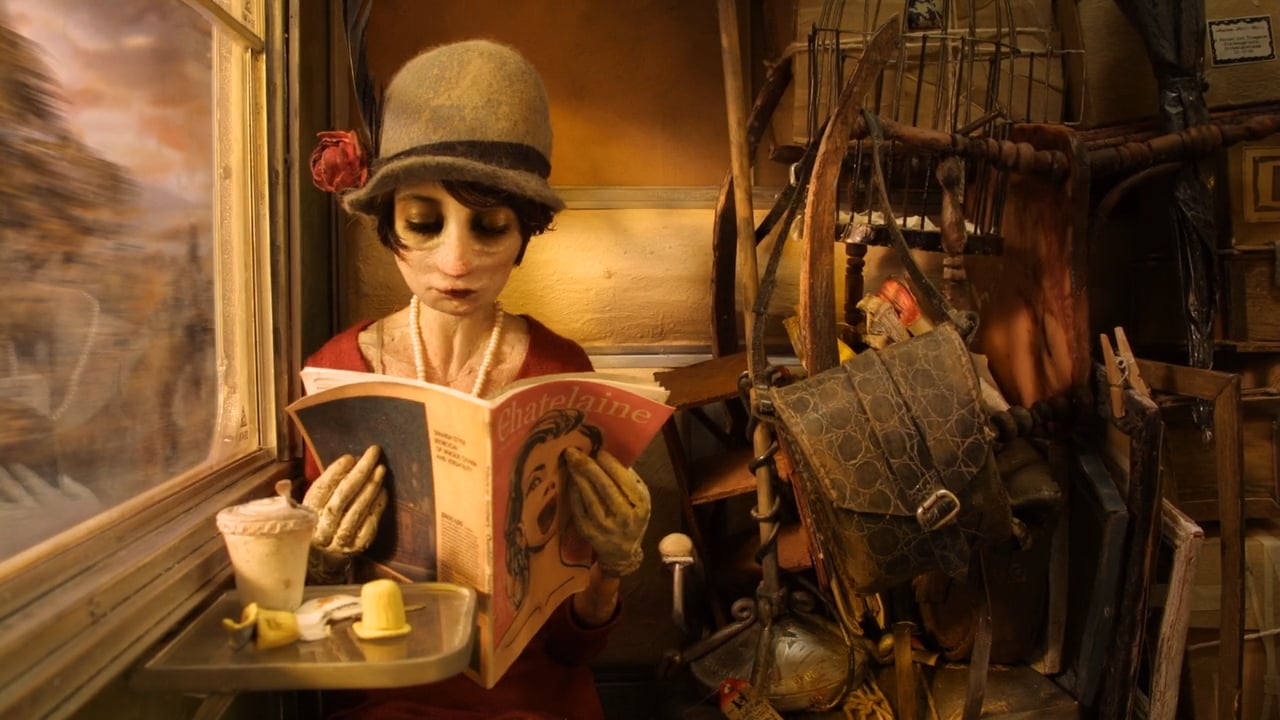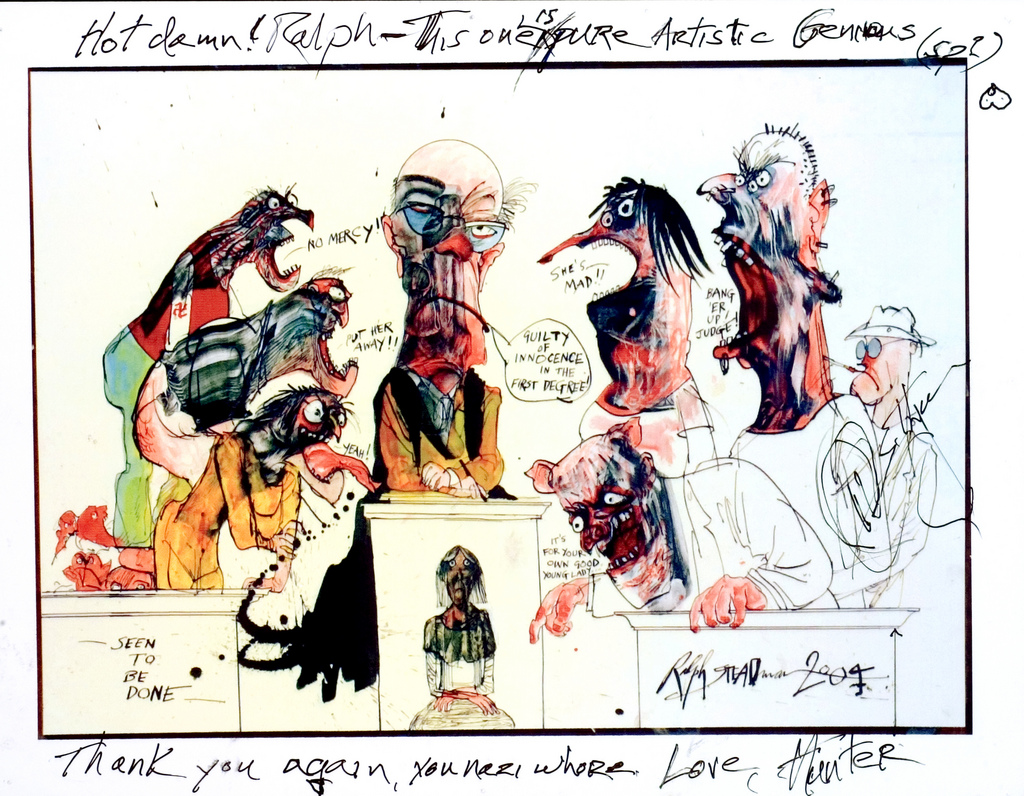
The intricate and surreal visuals of Chris Lavis and Maciek Szczerbowski’s stop-animated story Madame Tutli-Putli are alluring from the very first frames. Stadium lights are the only evidence given that the first scene takes place at a train station. They turn on like a controlled explosion to illuminate a foggy world. The camera pans along the ground where random objects are lined up: a record player, empty picture frames, a rocking chair, stacked books and piles of suitcases. They have sentimental value. They are old, used, cluttered and broken. Some objects may still fulfill their purpose, absent of the enthusiasm of when they were new. They are alive within the realm of their own defined perimeters.
Finally, the camera’s left frame envelops a tall slim woman trailing the tail of baggage and random objects. At first glance she looks like a creature with an exposed spine, with two feathers for eyebrows. Her enormous carry-on bags hug her frail shoulders. She stands crouched over a set of train tracks anxiously waiting for an arrival. Meet Madame Tutli Putli.
The story is driven by Putli’s huge bulging eyes, eyes that are human, alert, shifting and blinking with worry and fear. On the train she pretends to read or write, but she’s curious about the odd characters sitting near her in close quarters:
The ever-pondering chess players sitting above her rely on the train’s bumpy tracks to move their pieces for them. Perhaps they gain more perspective by watching the game randomly play rather than actively participating. A boy sitting diagonally across from her reads How to Handle Your Enemies. Is he a self-important paranoid kid who’s been on the train for too long? Finally, there’s the tennis player with an afro, a hook for a noose with high cheek bones. His crude sexual gestures towards her suggest that it’s nothing new to him.
Putli’s ever incredulous and artless expressions turn the world around her into a mysterious jungle of revelation and terror. The film’s set design is saturated in dark greys for fog and a reddish orange for a setting sun. The greens, browns and blacks make up the train, the trees and power lines that pass outside her passenger window. The score mopes about the film, flutes blow sighs and moans, violins scream like sirens and pluck with the rhythm of a duck walking. The cello strokes low end chords to accentuate approaching danger.
Directors Lavis and Szczerbowski lived in a black boxed room for two years to create the animation, both working during some of the sunniest days of the year. The term black box is known in psychology as the immaterial essence of the mind, one’s personality, the spirit or soul if you will. It is the fire that fuels one’s own animated existence.
The idea behind Putli doesn’t seem to question the possibility of death more than the impossibility of life. To her, its a menacing journey. The film dives into an existential realm where confusion and affliction are the force pushing Madame Tutli-Putli into a possibly imagined terror. With all that baggage, where is she going? Is she running from or to something? Would she have to cut off her own shadow to get away from it? Maybe she’s sentenced to always dodging real danger that misses her within the distance of a fairy’s wingspan.
Watch the film below.
This piece was originally published in 2013.






1 comments On “Madame Tutli-Putli” film review and video
Pingback: Yo, you good? – The Microscopic Giant ()
Comments are closed.